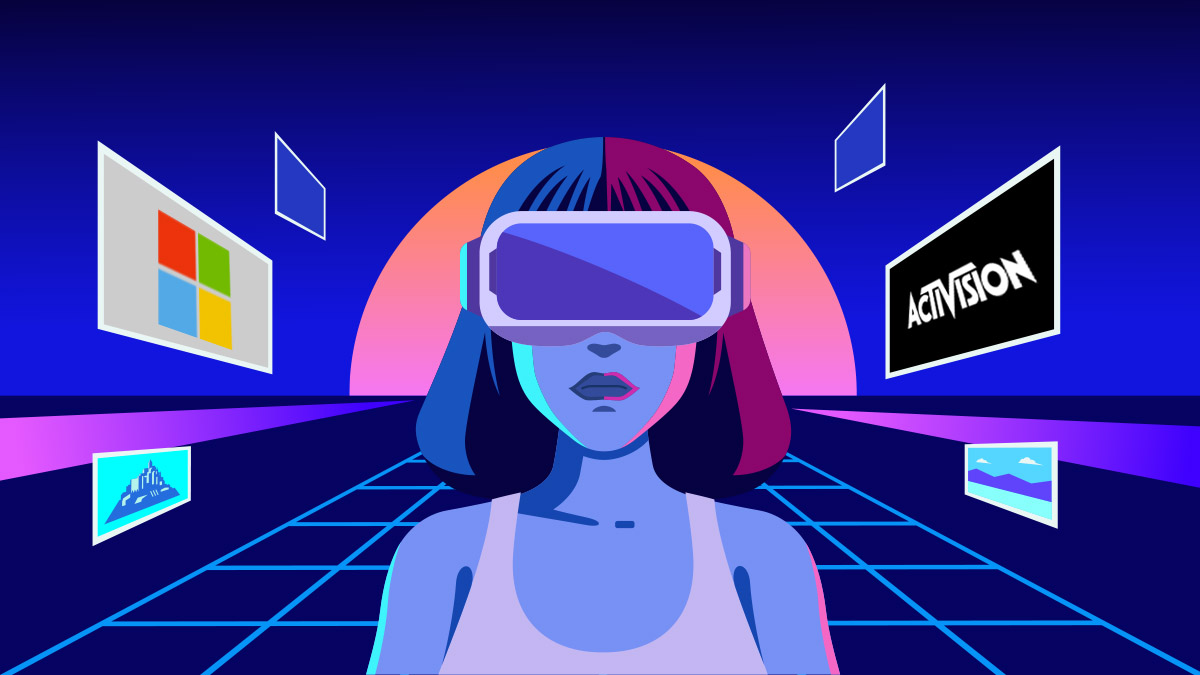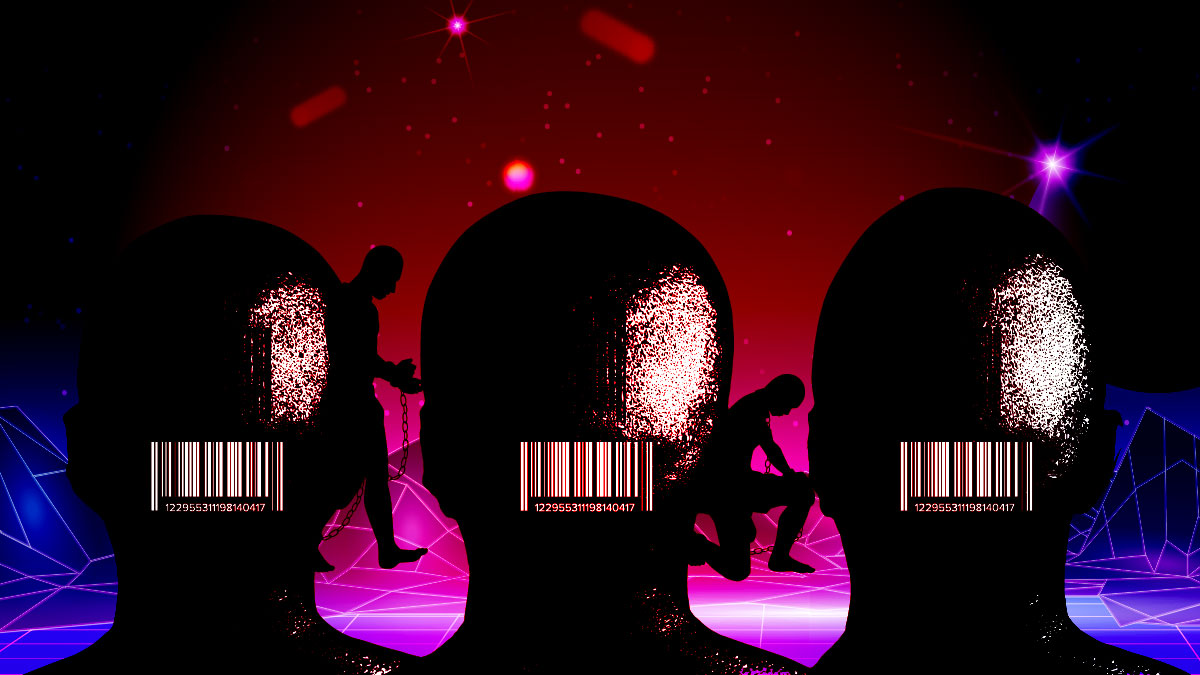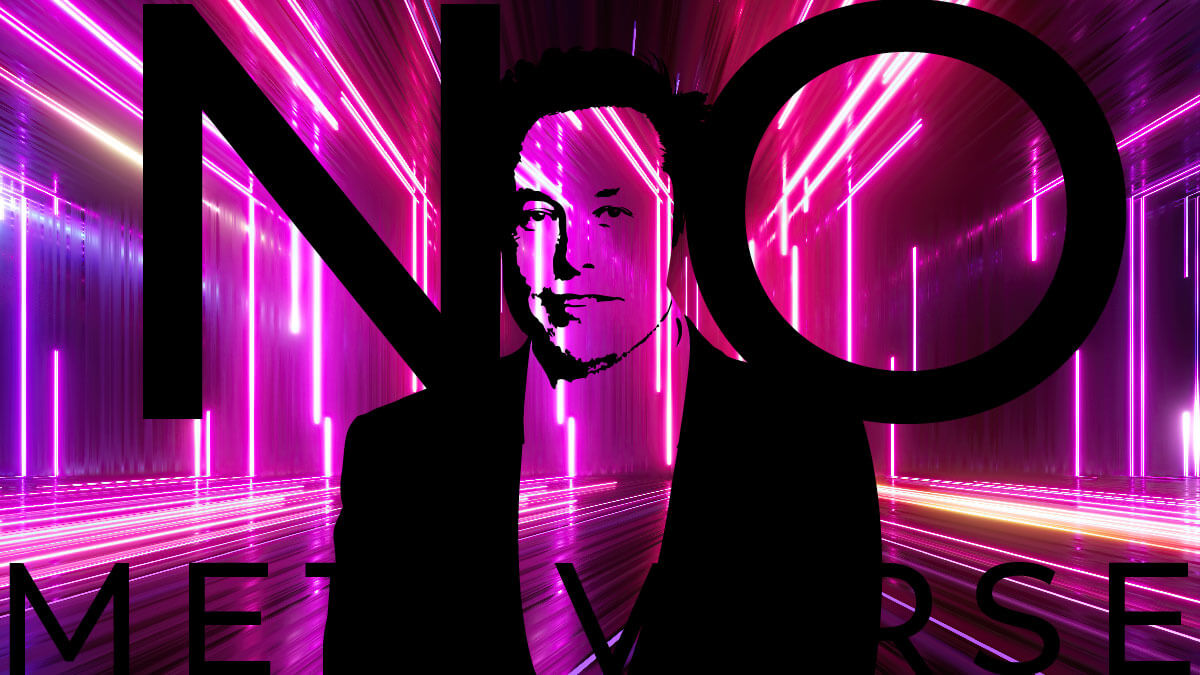Metaverse
Blizzard: A Thread Leading Microsoft into the Metaverse

When Microsoft unveiled its plans to acquire gaming titan Activision Blizzard on January 19, the tech scene was swift away with one newsflash. A deal, if it came to fruition, could be commemorated in Microsoft’s history as the first stone that pathed its way into the Metaverse.
The $75 billion deal’s announcement was led by a 15-minute investor and media call with highly ranked officials from both Microsoft and Activision fixating their verbal attention on the term ‘Metaverse.’
“When we think about the vision for what a metaverse can be, we believe there won’t be a single centralized metaverse,” Microsoft’s CEO, Satya Nadella, expressed during the call.
“We need to support many Metaverse platforms,” he added.
Experts believe that the Big Tech giant’s ambitious move to enter the gaming scene with one of the leading gaming titans in the industry is the first step for it to place itself at the helm of the Metaverse race, putting it in direct competition with some of the most prominent names in the industry, such as Meta Platforms Inc. – formerly Facebook – and Apple Inc.

According to Investopedia, the metaverse is a digital version of our day-to-day reality, intertwining various elements of “social media, online gaming, augmented reality (AR), virtual reality (VR), and cryptocurrencies,” enabling a purely interactive virtual experience.
With AR, users will be able to overlay different sensory elements from the real world to optimize their experience. At the same time, VR will strictly work on heightening the virtual aspect of the fictional realities in the metaverse.
Investopedia expressed that “as the metaverse grows, it will create online spaces where user interactions are more multidimensional than current technology supports. Instead of just viewing digital content, users in the metaverse will be able to immerse themselves in a space where the digital and physical worlds converge.”
The metaverse the Big Tech giants seek holds a much more symbolized meaning, though. The metaverse will be the space the tech industry built to bring a much deeper level of connectivity, laying the foundation of a digital way of living, working, shopping, and even socializing in a hypnotic virtual world where each person is to choose the reality they seek out, completely disconnecting them from the humanoid aspect of life.
And the video gaming industry presents itself as the ideal model of the metaverse. In theory, video games could take the player into a world where they have the absolute choice of being who they want to be through their avatars and behave how they want to act. Players indulge in a virtual world for hours non-stop, spending money on digital goods and whatnot.

Since the emergence of Metaverse, tech investors have shifted their attention to companies showing interest in the parallel digital world, with bets on metaverse-related technologies rising to new highs, as well as the rise of metaverse-themed exchange-traded funds that have been recently issued.
The Big Tech League is entering the field to welcome the metaverse soon and overlay digital shadows on reality, providing a much more comprehensive level of information and context.
Apple has already revealed plans to partake in the next monumental project for the tech giants, which played a critical role in the iOS developer’s rise to $3 trillion valuation before descending down to $2.99 trillion late last year.
And let’s not forget the then-labeled Facebook’s announcement of changing the company’s identity to represent its utopian vision of what an alternate reality would be, the “next generation of the internet” Meta’s CEO, Mark Zuckerberg, called it.
Still, in reality, the matter is that whoever controls the metaverse will obtain a much larger capital to usurp the rest of the Big Tech giants, therefore, disrupting the balance in the market, and imposing more monopolizing power over the industry.
That, is exactly what the tech legion giants are rummaging around for; to hold the reigns of the future of the tech industry, and whoever holds the keys to the Metaverse holds the key to the manifestation of the digital world.
So, by Meta and Apple pursuing the metaverse, and now Microsoft – and so early might I add – they are placing themselves in a position of power, in strife to become the new – and perhaps leading – tech giant amongst the five.

The video gaming industry is already presenting itself as a vital player in the metaverse race. Before the Covid-19 pandemic’s swift, the industry exceeded $100 billion globally. The framework, ecosystem, and infrastructure needed for the metaverse to thrive is already being structured in the gaming industry. While it is still in its primitive phase, it is, however, the first step that would lead to many more.
In Microsoft’s case, acquiring Activision Blizzard – other than being renowned as one of the leading gaming companies globally – the software developer now has the upper hand given it will pay less for the gaming titan’s acquisition, compared to what it was valued for last year.
Blizzard’s market devaluation in a matter of one year is mainly driven by The Wall Street Journal’s report around how Bobby Kotick, Activision’s CEO, knew about the allegations of sexual misconduct taking place at the video gamer maker’s premises. Following the report, the company’s shares dropped as much as 6 percent.
To the surface, Microsoft is welcoming to its realms a comprehensive community of dedicated gamers through Activision, but what does it truly mean for the tech giant’s plans alongside the metaverse? It’s hard to say, given that the ascend of the metaverse is still in its primary stages, with many factors need to be addressed before the whole project comes to concrete fruition.
Yet, one thing is certain in this scenario, Microsoft is placing itself in a rivalrous stance not only with Meta Platforms Inc. but a brigade of video games companies in the industry. While the deal awaits regulatory approval – which experts believe could take some time to clear out – if succeeded, the company “would obtain various online games with metaverse characteristics,” according to The Wall Street Journal.

For Microsoft to thrive in this situation, it will need the support of millions of dedicated gamers to help it leave a mark in the multiverse by creating a digital ecosystem for one specific community in the project. This places the gaming community as the leading driver of building the needed crowd to fulfill the success of the metaverse and, by default, the company’s success in building a better, more superior version of digital space.
Video gaming companies are already weaponized with the needed tools to build the parallel world. The tools required to direct technology in a particular path, such as graphics, cloud computing, artificial intelligence (AI), and virtual marketplaces. Once these tools are invested in the right places and with the right product, Microsoft will have Activision’s intelligence to build the groundwork for its version of the metaverse.
Even as Big Tech companies place their mightiest efforts in the race of the Metaverse, one thing needs to be taken into consideration, the giants of the tech industry have not reached the eminence they desire as the most valuable titan based on one ground-breaking product. Until the metaverse concept emerged to the scene as a technological contribution on a global scale.
Metaverse
Will the Metaverse Mark the Coming of Digital Slavery?

If the internet and the videogame industry have shown us anything, it is that where humans go, human vices follow. Violence, sexual assault, abuse, and more, the internet is home to everything that exists in the real world, accentuated by the anonymity and lack of regulation offered on the web. With that, could we see one of humanity’s worst inventions, slavery, finding fresh soil in the hyper-immersive digital world called the Metaverse? Might we see the emergence of digital slavery?
Metaverse technology has exceeded the ideation stage and upgraded to the on-ground application rather than remaining an innovation, which means the possibility of the Metaverse encroaching on the real world is getting closer. Since the start of the pandemic, a large number of people have gradually shifted to conducting their daily lives online. Bringing these activities together in one cohesive digital environment is not as big of a step as it might have seemed a few years ago because we have gradually grown accustomed to working, shopping, and socializing digitally.
Where the Border Crosses into the Danger Zone
There are several facets of the modern-day that people refer to, although loosely, as slavery. It might be easy to dismiss online activists who scream “modern slavery” whenever their boss asks them to work overtime. While it is indeed unethical to compel workers to work weekends, what we are discussing here is far more sinister and less subject to arguments.
You can quit your job, but can you really throw in the towel on all things digital in today’s world and still be able to function and survive?
Information is Power
We all know by now that our data is not in our hands for the most part. If you interact with the digital world in any capacity, you leave a digital footprint in the form of information. This information is stored and used by the companies that own your points of interaction, both in the form of hardware (your phone) and software (your Facebook account).
Whenever this data is obtained by governments or corporations, whether legally or otherwise, through murky and drawn-out contracts, the user is enslaved in the sense of ownership, the emergence of new categories of information “slave owners” has been made possible by the combination of linked personal data, coercive and automated information gathering, and “forever storage.”
Personal information is extracted, traded, and asserted. The traders contend that all of the personal information they have obtained is “unowned” raw material. Similar to raw materials, those who extract and refine the material own the commercial value and the raw material itself. What is to say that we, as sources of raw material, are not refined, packaged and sold off to the highest bidder in a macabre form of digital slavery through information.
The more reliant we are on the digital world, and the more digitized our world becomes, the closer we draw to such a reality.
Social Credit System and Digital Slavery
This must be mentioned. One of the most effective ways to control a population is to incentivize certain behaviors through rewards and punish others.
Think corporate loyalty programs, but darker, much darker. The Chinese government’s social credit system imposes sanctions for “bad,” or behavior that is not supported by the state—to see where this kind of government behavior might lead. If such systems were to proliferate, aided by the data that every tech giant has on everyday people, you have a groundwork on which to impose control over an entire population and may give the right to digital slavery. At the very least, digitally-enabled methods of control.
Digital Workforce
In a less creepy but equally thought-provoking stance, a company called Soul Machines, based in New Zealand, claims to create AI-driven digital humans for clients to use for things like customer service, marketing videos, and education. According to The Verge, co-founder Greg Cross stated that the company also has its eyes on the future and intends to build a “digital workforce” for a potential metaverse. Could this be digital slavery in its infancy being cast as a cool new techy trend?
The disturbing part is that these concepts are not necessarily born with the Metaverse, still a vague concept without a form, but they are realities of daily life today. With the hyper immersive and deeply seeded technological capabilities that metaverse technology has to offer, we might see these concepts cracked up to eleven.
Inside Telecom provides you with an extensive list of content covering all aspects of the tech industry. Keep an eye on our Technology and Metaverse sections to stay informed and up-to-date with our daily articles.
Metaverse
Elon Musk’s Take on the Metaverse

Two currents that are said to revolutionize the digital world are the Metaverse and Web 3. Elon Musk, the world’s richest man, is not a fan of either. As the CEO of SpaceX and Tesla, Elon Musk’s take on the Metaverse was made quite clear in his interviews and tweets. He couldn’t envision a compelling use-case for the VR-driven Metaverse and mocked Web3, a hazy idea in which internet services are redesigned around blockchain and cryptocurrency, saying “I don’t get it” and calling it “more marketing than reality.”
Musk acknowledged that he might simply be “too old” to comprehend these cutting-edge technologies. He asked, before adding that he was very much one of those people who understood the potential of the internet in 1995, “Am I like one of those people who was dismissing the internet [in] ’95 as some fad or something that’s never going to amount to anything?”
Musk criticized the Metaverse for lacking compelling use cases and providing consumers with a subpar experience.
Elon Musk’s take on the Metaverse came off as a mockery, saying that “putting a TV on your nose does not necessarily put you in the Metaverse. He went on to say that he doesn’t see people strapping headsets to their heads for an extended period of time and never wanting to take them off, Musk said. Musk added that he has yet to see a compelling argument for the creation and proliferation of the Metaverse.
Another alternative vision for the internet’s future is Web3, which has received a lot of support because of the notion that regular internet users will be able to directly profit from their content and online activity rather than having this value captured by a few tech giants.
Regarding Web 3, another term thrown around alongside the Metaverse, Musk didn’t spend much time talking about Web3, but like fellow tech CEO Jack Dorsey, he has previously expressed doubts about the initiative on Twitter. Dorsey’s argument is that Web3 won’t democratize anything; rather, it will merely transfer authority from established incumbents like Facebook to upstart venture capital firms like Andreessen Horowitz.
Elon Musk’s take on the Metaverse, or what it could become, more heavily leans towards Neuralink. He believed that the Neuralink invention has a better chance of offering a metaverse-like experience than any amount of VR technology. “In the long term, a sophisticated Neuralink could put you fully into virtual reality. I think we’re far from disappearing into the Metaverse, this sounds just kind of buzzwordy.”
Musk founded Neuralink, a neurotechnology business with the primary goal of implanting brain implants in people in order to improve and restore their physical capabilities using computers. But in the future, who knows if the invention could be used to drape human perception with digital XR elements.
Inside Telecom provides you with an extensive list of content covering all aspects of the tech industry. Keep an eye on our Technology and Metaverse sections to stay informed and up-to-date with our daily articles.
Metaverse
The Industrial Metaverse and Digital Twins

Since Facebook announced it is rebranding to Meta, the long-forgotten concept of the Metaverse, which first appeared in 1992 in the novel “Snow Crash”, has suddenly become the talk of the town. The concept of the Metaverse is fascinating to say the least, for all the good and bad reasons. It is no longer a question of who owns the Metaverse, but rather what the Metaverse is developed for. As with any technology, the Metaverse does indeed have a dark side with people interacting in the digital world without any proper regulatory measure. However, many other applications are taking the concept in the right direction with a potential to improve many practices and activities. The industrial Metaverse is a concept that merges advances in industrial IoT (IIoT) with the latest developments in 3D representation and the extended reality. While IIoT has been the driver for Industry 4.0, the Metaverse can indeed be the precursor for Industry 5.0. On another note, the industrial Metaverse is a concretization of digital twin solutions applied to industrial applications. Therefore, how is the industrial Metaverse shaping up to be the next big thing?
Industrial Metaverse Use Cases
The industrial Metaverse is meant to change how industries are functioning, both reducing costs and improving performance. The scale of changes is similar to what digital twins in meant to bring to the healthcare sector.
Automation
With the advent of the new virtual world, automation will be taken to the next level. The combination of IIoT and 5G private networks has allowed enterprises to streamline their operations. The addition of an extended reality layer will allow related personnel to visualize how automation is taking effect and identify ways to improve it.
Product Design
One of most time-consuming tasks in industry is the proper design of products. The main issue in the process is how to find the optimal design that meet the defined requirements without any defects or foreseeable issues when it is meant to be put into operation. The output of the design process will have a big effect on the remaining steps including manufacturing and testing. This is why extensive simulations are usually performed to make all variables are behaving as they should. The industrial metaverse will enable a digital twin of the product being designed. The group of engineers responsible for the design can see the product in action before even being manufactured. The extended reality tools will therefore faithfully represent how the end-product will operate in real scenarios.
Manufacturing and Supply Chain
Manufacturing is another key process that affects the whole product lifecycle as involves many activities including the provision of materials, the availability of the required manufacturing tools, among others. Manufacturing is also the central component of the supply chain, in between the sourcing and procurement processes and the delivery process. While it is affected by delays in acquiring in necessary resources, it can itself significantly affect the distribution of the intended product. The beauty of the industrial Metaverse is that it allows the streamline the whole process, reproducing every single step and detail. As in the design process, the personnel can predict ahead of time the root causes of any issue and delay and optimize the supply chain accordingly. Think of it as a virtual Lego where you have infinite resources to choose from to complete your structure!
Training
With any new product and design process comes the need to do a complete training to the different employees involved in the cycle. Trainings are usually costly processes involving the procurement of machines and using the services of specialized instructors. The industrial Metaverse can be used to create a complete lab environment with avatars of the needed instructors and a digital twin representation of the machines, tools, and product needed. The immersive learning experience will provide the same intended result as in a normal physical setup.
Troubleshooting, Testing, and Support
The last advantage worth mentioning for the industrial metaverse is in the testing, troubleshooting and customer support. The ability of future Metaverse environments to faithfully replicate physical entities will make post-production troubleshooting, testing, and support much simpler. For instance, testing new components requires the development of specific tools that will allow the execution of testing scenarios. This extremely costly, yet necessary process, can be greatly streamlined using the future digital ecosystem.
Siemens and the NVIDIA Omniverse
Companies have started going into the new industrial Metaverse ecosystem. Siemens lately announced an agreement with NVIDIA to use its Omniverse platform to create its own industrial Metaverse. NVIDIA’s Omniverse is a multi-GPU (graphical processing unit) platform for 3D simulations with a support to the addition of AI-tools to create virtual movable elements that replicate what is happening in the physical reality. When combined with the Siemens Xcelerator platform, a digital twin for industrial purposes will be created.
The SOLIDWORKS Metaverse
SOLIDWORKS is a platform that is widely used to develop elaborate three-dimensional computer-aided design (CAD) models. Lately, the company developed an extended reality addition that will virtually bring the developed 3D structure to life thus producing a Metaverse-like ecosystem where the user can interact with the product using augmented, virtual and mixed reality techniques.
Summary
The industrial Metaverse is shaping to be one of the popular and “good” applications of the upcoming virtual world. In a sense, the industrial Metaverse is the industry-specific digital twin solution that is expected to come with future evolutions of the current 5G standard when computational and communications capabilities are enough to produce a seamless lag-free experience. The complete supply chain process can be optimized. The investments towards the construction of the digital twin solution will undoubtedly result in considerable cost savings later on.
“Inside Telecom provides you with an extensive list of content covering all aspects of the tech industry. Keep an eye on our Metaverse, Technology, and Impact space to stay informed and up-to-date with our daily articles.”





















